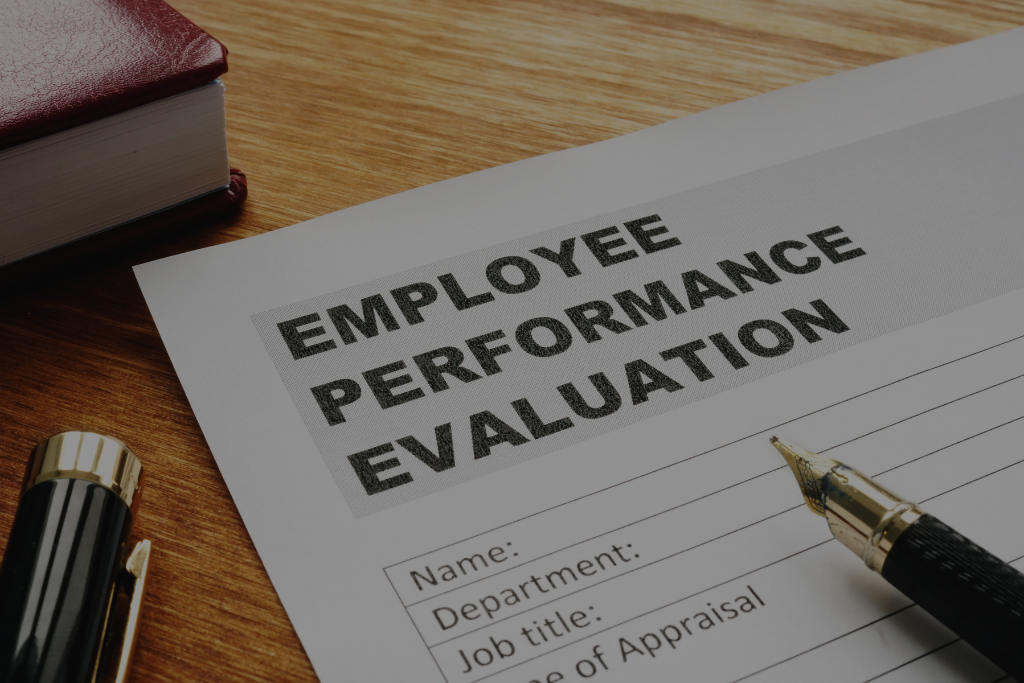Employee performance tracking on a regular basis is essential for any organization that wants to align individual goals with broader strategic objectives, drive continuous improvement, and foster employee growth. By setting clear SMART goals, providing regular feedback, and using data-driven decisions to make informed choices, companies can boost both productivity levels, review process and job satisfaction. A well-structured framework helps teams focus on behaviour, task completion rates, and professional development while offering actionable insights for ongoing feedback. In this blog, we’ll explore approaches— from classic annual reviews to real-time monitoring—that strengthen the performance management process and lead to sustained organizational performance.
Establish Clear and Measurable Goals
Goal setting forms the foundation of an effective performance management strategy. When objectives are specific, measurable, attainable, relevant, and time-bound (the SMART framework), each individual employee knows exactly what’s expected. Goals provide direction, foster a sense of ownership of development, and pave the way for data-driven decisions.
- Goal Alignment: Ensure employee goals align with organizational goals and strategic objectives. This alignment is critical for channeling efforts toward business goals while avoiding wasted resources.
- Types of Goals: Some common types include sales targets, customer satisfaction scores, or project completion deadlines—each can be tracked with key metrics like absenteeism rate or error rates.
Implement Robust Feedback Channels
Constructive feedback drives professional growth by highlighting both positive behaviors and areas for improvement. Ongoing feedback mechanisms create a safe space for employees and managers to communicate openly.
- Two-Way Communication: Effective performance management systems prioritize communication between managers and their teams. Both positive feedback and negative feedback should occur through honest communication at regular intervals—like monthly or quarterly check-ins.
- Feedback on Employee Performance: Leverage consistent and real-time feedback to identify performance issues before they become major bottlenecks. Encouraging employees to voice suggestions for improvement also nurtures a culture of continuous learning and fosters job satisfaction.
Select Appropriate Employee Performance Measurement Tools
Choosing the right performance management tool can streamline the process of monitoring employee progress and capturing real-time data on productivity.
- Time-Tracking Tools: Tools that track idle time, attendance, and task completion rates can provide quantitative metrics on performance over time, especially useful for remote employees or hybrid teams.
- Project Management Tools: Software developers and other professionals often rely on Kanban boards or Gantt charts to visualize project timelines, ensuring effective communication of expectations.
- Comprehensive Performance Review Software: Opt for systems with a customizable performance review feature, so you can implement rating scales, employee self-evaluation templates, or pre-set performance review templates for a flexible approach.
Explore Traditional Performance Review Methods
Advantages and Disadvantages of Traditional Reviews
The classic approach to measuring individual performance involves annual performance reviews or other scheduled performance review cycles.
- Advantages:
- Provides a documented record of employee performance at a designated point in time.
- Offers a structured opportunity for employees to discuss their career development and receive suggestions for improvement.
- Disadvantages:
- Can create an administrative burden and might fail to capture performance over time accurately.
- Lacks the real-time feedback that employees often need for immediate course corrections or additional training.

Leverage 360-Degree Feedback Systems
Benefits of 360-Degree Feedback
A 360-degree feedback approach gathers critical insights from multiple sources, such as peers, subordinates, and even customers.
- Holistic Perspective: This comprehensive approach centers on behaviors, communication, and relationship-building rather than solely on numeric ratings.
- Valuable Insights and Data-Driven Decisions: Combining feedback from various stakeholders can illuminate blind spots and inform performance improvement strategies at both an individual and organizational level.
Potential Challenges with 360-Degree Feedback
Despite being a powerful tool, the 360-degree feedback process needs to be managed carefully.
- Rating Bias: Without a well-structured framework for collecting feedback, responses might lean toward personal relationships or public praise, skewing results.
- Safe Space for Employees: For feedback to be genuine, employees must feel they can voice their opinions without fear of reprisal. Proper training programs and performance management module features can address these issues.
Utilize Project-Based Evaluations
Pros and Cons of Project-Based Tracking
When organizations rely heavily on projects, evaluating performance based on project outcomes can be beneficial.
- Pros:
- Encourages accountability for project deliverables and tasks within a specific timeframe.
- Generates actionable insights on time management, resource utilization, and Customer Service levels, especially helpful in measuring team productivity.
- Cons:
- Results may be skewed if a single individual employee is disproportionately affected by external factors like customer acquisitions or shifting priorities.
- May not reflect the employee’s overall development or their contributions to intangible aspects like organizational culture or peer learning.
Foster Continuous Communication with Employees
An effective performance management process involves more than just one-time assessments; it’s about maintaining ongoing feedback channels.
- Regular Check-Ins: Meetings with employees—be they formal reviews or informal check-ins—enable swift identification of performance issues, recognition of exceptional performance, and realignment with organizational objectives.
- Manager-Employee Relationship: Consistent dialogue fosters trust, provides clarity on responsibilities, and highlights ideas for improvement that employees can implement immediately.

Engage Employees in the Performance Process
When employees take an active role in shaping their performance journey, they gain deeper ownership of development and personal growth.
- Self-Evaluations: Encouraging self-assessment of performance can yield honest communication about strengths, weaknesses, and opportunities for growth.
- Employee Feedback on Tools and Processes: Pulse surveys or quick questionnaires can reveal whether the current combination of approaches is effective or if employees prefer a classic approach to performance tracking.
Identify Effective Employee Performance Metrics
Examples of Key Performance Indicators (KPIs)
KPIs serve as quantitative or qualitative measures that reflect how well an employee or team meets specific objectives.
- Productivity Metrics: For software developers, lines of code or bug resolution rates might measure output. For Customer Service, average customer satisfaction scores can be key.
- Behavior Metrics: Tracking punctuality, absenteeism rate, or error rates can reveal patterns in reliability and overall consistency.
- Task Completion Rates: Focus on the rate at which employees finish assigned tasks within a designated timeline.
Address Common Challenges in Performance Tracking
Strategies for Overcoming Resistance to Feedback
Employees might resist or fear receiving negative feedback, especially if past experiences with annual reviews or manager-employee relationships have been contentious.
- Create a Safe Space: Ensure that the environment encourages open conversation. The combination of open dialogue and private channels for comments can reduce tension.
- Public Praise and Private Corrections: Reinforce positive behaviors publicly but deliver constructive feedback in a one-on-one setting to maintain morale and honesty.
Optimize Your Performance Tracking Process
Best Practices for Continuous Improvement
Stagnation in a performance management process can derail company goals and hamper employee productivity. Here are some ways to keep momentum and drive consistent growth.
- Use Real-Time Data: Combine regular intervals of observation, real-time monitoring, and performance reviews to capture performance over time. This helps managers make informed decisions promptly.
- Encourage Ongoing Feedback: Shift focus from annual reviews to consistent or monthly check-ins. This fosters timely modifications in individual performance, limiting the risk of performance decline going unnoticed.
- Align with Organizational Goals: Ensure every performance metric ties back to strategic goals or business decisions. This top-down alignment guarantees that efforts at the individual level benefit the entire organization.
Conclusion
Employee performance tracking is a powerful tool for organizations aiming to align individual performance with strategic goals while nurturing a culture of continuous improvement. Managers can gain valuable insights into individual employee performance and areas needing additional support by defining SMART goals, using relevant performance metrics, and exploring frameworks such as 360-degree continuous feedback, goal progress, or project-based evaluations. Fostering open communication, offering regular feedback, and providing learning opportunities ultimately lead to higher productivity and enhanced job satisfaction and employee development. In a well-structured performance management system, employees feel empowered, engaged, and prepared to grow alongside the company.